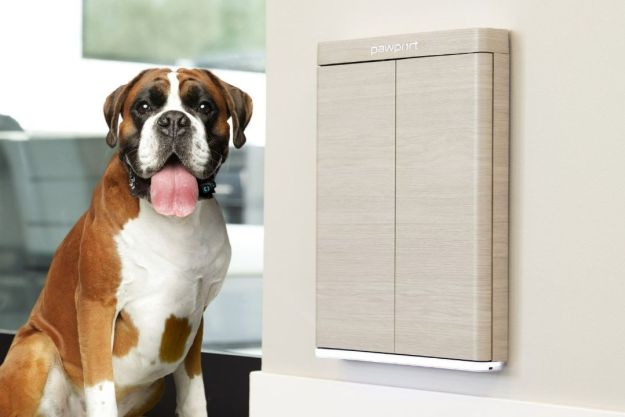CES 2021 has been a source for major announcements in the smart home industry: Companies large and small announced new products, and several themes emerged throughout the conference. There are at least five major trends worth noting in the smart home world — themes that hint at the direction devices might take over the next year.
A major focus on health tech

For obvious reasons, many of the new smart devices shown at CES 2021 are built with health in mind. Devices like Toto’s Wellness Toilet provide users with a wealth of information about their own health based on a number of external sensors that analyze both skin and waste. Both of these sources provide valuable information that can help catch potential health problems before they worsen.
Another example of this lies in the Ettie Smart Video Doorbell. It not only functions in all the ways you expect a smart doorbell to work, but it also takes the temperature of any visitor and alerts you if they have a fever. This doorbell was designed to help with contact tracing. By logging visitor’s temperature at the time of their arrival, it helps trace outbreaks.
Touchless experiences may be the new standard

Several new video doorbells launched from companies like Arlo and Alarm.com, and they have one major trait in common: You don’t have to actually touch the device to ring the bell. Both of these models use different technology to track when guests arrive, but they each help maintain proper social distance.
By eliminating the need for guests to actually touch the doorbell to ring it, these doorbells reduce the potential for germs and bacteria to spread from visitor to visitor. This keeps everyone, from the babysitter to the GrubHub driver, just a little bit safer.
More devices ditching the bridge

Early iterations of smart home devices often required a secondary bridge to connect to Wi-Fi. It wasn’t unusual, and it still isn’t; for example, Philips Hue (which just expanded, adding three new devices) still needs the Hue Bridge for control of its smart lights. CES 2021 saw many smart home products that don’t require a bridge of any kind — a welcome change, especially if you have a limited number of Ethernet ports on your router. I have two — one for a hardwired PC, the other for the Philips Hue bridge.
The newest model of the August Smart Lock eliminates the need for a Wi-Fi bridge by building the capability into the lock itself. The same shift can be seen in Eufy’s new Smart Lock. The most recent model of the Smart Lock Touch also has Wi-Fi capabilities built into the device.
The built-in Wi-Fi is more convenient, but it also makes the devices “smarter.” Secondary devices introduce more failure points into a system. Smart home technology by its very nature must be reliable and seamless, and integrating Wi-Fi into a device takes it one step closer to that.
Gym-level workouts at home

The idea of receiving a full, high-quality workout at home without ever going to the gym was popular long before the pandemic ever reared its ugly head, but now that gyms are closed, it’s even more important for the fitness-minded. CES 2021 has seen a huge number of devices tailored to burning calories and getting toned.
Samsung announced the Smart Trainer, a device that works with Samsung smart TVs and a webcam to track workouts. Xenoma launched the odd-but-unique e-skin EMStyle bodysuit, packed with 24 electrodes that stimulate the muscles and provide a full-body workout with just 20 minutes of cardio.
Ultrahuman is another subscription-based platform that has seen a lot of popularity. This platform is built around the Apple Watch and showcases your heart rate, calories burned, and more. Services like this provide all the expertise of a personal trainer in the home — all that’s missing is a full weight system.
Smart home technology is becoming more private

Privacy has always been a major point of focus for smart home technology. Between always-listening devices, security cameras, and smart speakers, homeowners place a lot of trust in technology. There have been numerous instances of hackers taking over cameras, speakers listening when they shouldn’t, and more.
Companies have taken steps toward better privacy and security in smart home devices recently, specifically with the introduction of physical lens shields. It’s one thing to believe a camera when it says it isn’t recording; it’s something else when there is a physical barrier in place that the camera cannot see through.
The introduction of safeguards like this gives users more control over their privacy — and ultimately, more peace of mind that their data is actually private.
Editors' Recommendations
- SimpliSafe is now using AI to prevent burglars from entering your home
- Home Depot’s Hubspace is a great way to start building your smart home
- The Skylight Cal Max is a 27-inch smart calendar that might replace your smart display
- Daisy is an installation and repair company designed for your smart home
- Beatbot makes a splash at CES 2024 with all-in-one robotic pool cleaner




